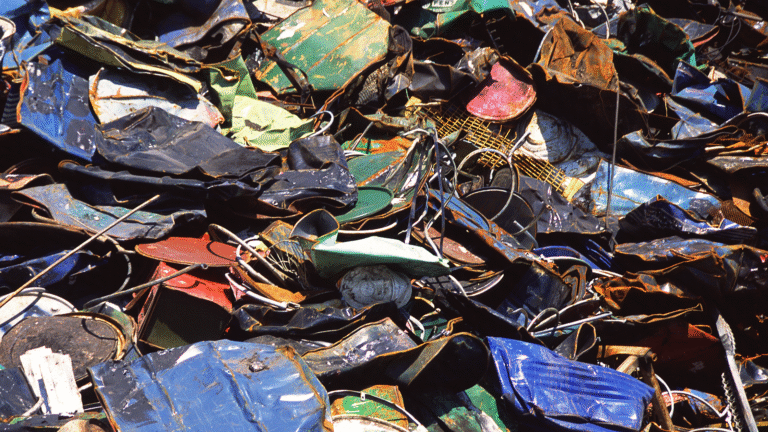Electric vehicles (EVs) have revolutionised how we drive—but now, they’re also changing how cars are made. As Australia pushes for a more sustainable future, EV manufacturers are integrating recycled materials into every part of the production process—from seats and dashboards to batteries and bumpers.
For environmentally conscious Aussie drivers, the shift toward recycled and sustainable materials in EV manufacturing is more than just a green bonus—it’s a critical step in reducing the automotive industry’s footprint from the inside out.
—
Table of Contents
- Why Recycled Materials Matter in EV Manufacturing
- Types of Recycled Materials Used in EVs
- Benefits of Recycled Materials for Sustainability and Performance
- EV Brands Leading the Charge in Sustainable Manufacturing
- Challenges and the Future of Circular EV Design
- FAQs
- Conclusion
—
1. Why Recycled Materials Matter in EV Manufacturing
EVs are often touted for their zero tailpipe emissions—but the reality is, manufacturing any car still involves resource-intensive processes. Using recycled materials helps tackle emissions and environmental impacts at the production stage, not just on the road.
In Australia, where climate concerns, waste reduction, and circular economy policies are gaining momentum, drivers are demanding vehicles that align with their values from production to performance.
By using recycled plastics, metals, fabrics, and composites, EV makers can:
- Reduce reliance on virgin raw materials
- Lower greenhouse gas emissions during manufacturing
- Decrease industrial waste going to landfill
- Conserve energy and natural resources
—
2. Types of Recycled Materials Used in EVs
Here’s a look at where recycled materials are making their way into EVs:
| Material | Application | Recycled From |
|---|---|---|
| Recycled Plastics | Dashboards, door panels, carpets | Bottles, packaging, old parts |
| Recycled Aluminium | Body frames, battery housings | Industrial scrap, old cars |
| Recycled Steel | Structural components, chassis | End-of-life vehicles, appliances |
| Recycled Fabrics | Seat covers, headliners | Plastic bottles, old textiles |
| Ocean Plastics | Interior trims, floor mats | Fishing nets, marine debris |
| Reclaimed Wood or Cork | Dash accents, trim pieces | Industrial offcuts, wine corks |
| Recycled Battery Materials | New EV battery cells | Spent lithium-ion batteries |
Some manufacturers are even experimenting with biodegradable and plant-based alternatives to synthetic materials—like mushroom leather, hemp fibre, and flax composites.
—
3. Benefits of Recycled Materials for Sustainability and Performance
🌱 Lower Carbon Footprint
Recycling materials uses significantly less energy than extracting and processing virgin resources.
🔄 Promotes Circular Economy
Designing vehicles with end-of-life reuse in mind aligns with circular economy goals gaining traction across Australian states.
🌊 Tackles Plastic Waste
With Australia generating over 2.5 million tonnes of plastic waste annually, incorporating recycled plastics helps address this growing issue.
🛠️ Lightweight for Efficiency
Recycled aluminium and composites can reduce overall vehicle weight, boosting EV range and performance.
💡 Eco-Conscious Branding
Brands using recycled content appeal to a growing segment of Australian car buyers prioritising sustainability and ethical sourcing.
—
4. EV Brands Leading the Charge in Sustainable Manufacturing
Several EV manufacturers are already integrating recycled materials into their production lines—many with global supply chains that include Australia:
| Brand | Notable Recycled Features |
|---|---|
| Tesla | Uses recycled aluminium and plastics in body/frame |
| Polestar | Polestar 2 uses ECONYL® (recycled nylon) in carpets |
| BMW | iX and i3 models use recycled aluminium, ocean plastics |
| Volvo | Committed to 25% recycled plastics in vehicles by 2025 |
| Hyundai/Kia | IONIQ 5/6 and EV6 feature recycled PET, wool, and plastics |
| BYD | Exploring closed-loop recycling for batteries and plastics |
Australian start-ups and manufacturers are also researching local materials and remanufacturing processes that can reduce reliance on imports and cut emissions.
—
5. Challenges and the Future of Circular EV Design
While the shift to recycled materials is promising, it’s not without hurdles:
⚙️ Supply Chain Complexity
Sourcing consistent, high-quality recycled inputs at scale remains a challenge for many automakers.
🔍 Material Performance
Some recycled plastics and fabrics must be reinforced or blended to meet safety and durability standards.
🔄 Recycling Infrastructure
Australia’s domestic recycling capabilities are improving, but gaps remain in battery recycling and composite material recovery.
🔋 End-of-Life Recovery
Designing EVs for disassembly and easy material separation is a major focus for future circular models.
Still, as technologies improve and consumer demand grows, EVs designed for life after the road—through reuse, recycling, and remanufacturing—are fast becoming the new standard.
—
FAQs
🔄 Can EV batteries be recycled?
Yes. Many manufacturers are developing battery recycling systems to recover valuable materials like lithium, nickel, and cobalt.
🌿 Are recycled materials less safe?
No. All automotive materials, recycled or not, must meet strict global safety and performance standards.
♻️ Does buying an EV with recycled materials help the environment?
Yes. You’re supporting lower emissions, reduced landfill, and responsible resource use—even before the car hits the road.
🚗 Do Australian-made EVs use recycled materials?
Australia’s EV manufacturing sector is still emerging, but local R&D is exploring recycled aluminium, tyres, and plastics for future applications.
—
Conclusion
Sustainability in EVs isn’t just about what goes into the battery—it’s also about what goes into the body, cabin, and life cycle of the vehicle. For Australian EV drivers, choosing models that use recycled materials means supporting innovation, reducing waste, and driving toward a cleaner future from day one.
♻️ As EV tech continues to evolve, expect recycled and renewable materials to be at the heart of every electric vehicle—and every sustainable road trip across the country.
—
Discover how recycled materials are transforming EV manufacturing. Learn how electric cars are becoming greener—from plastic bottles to ocean waste—in Australia.
